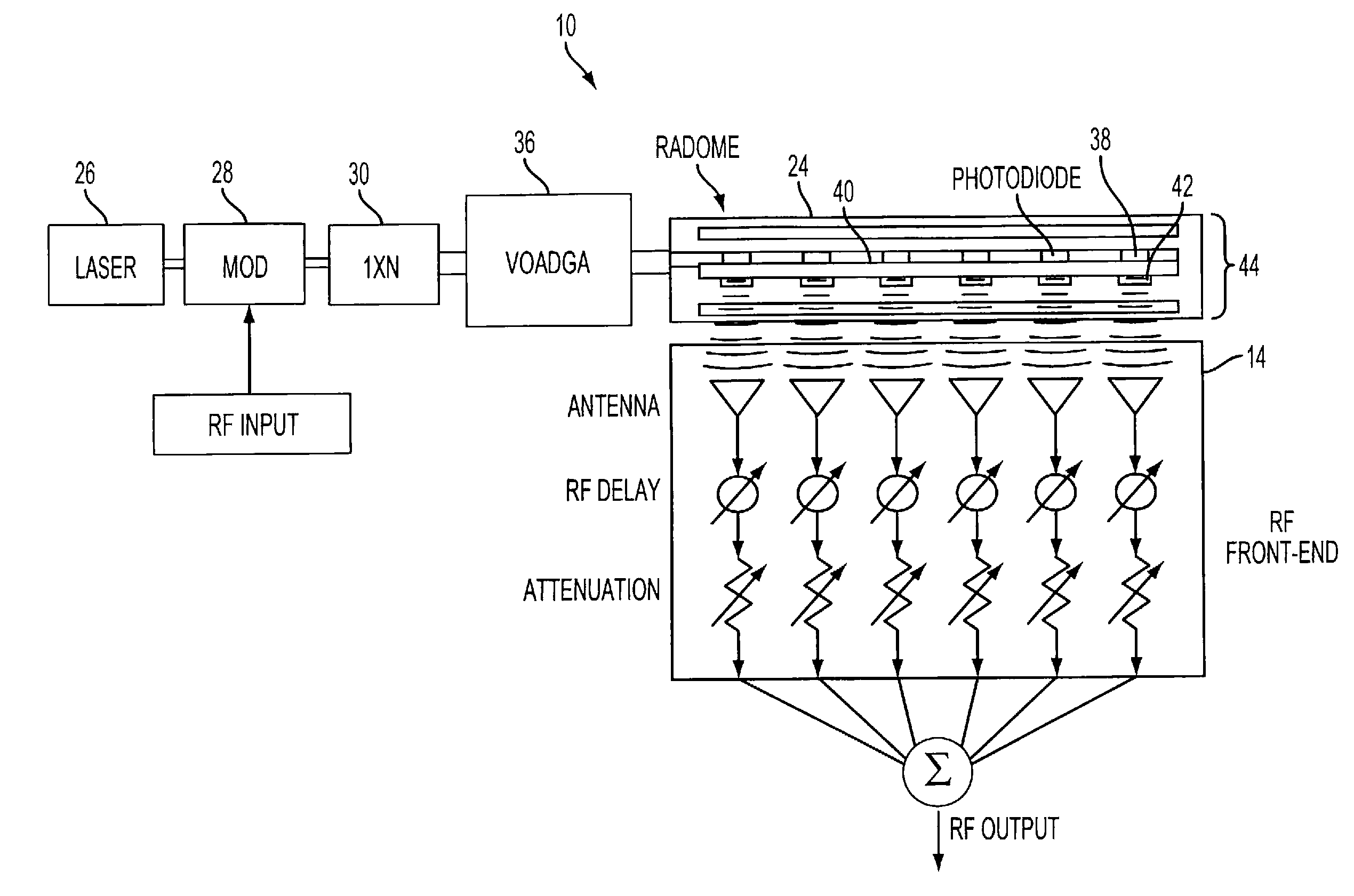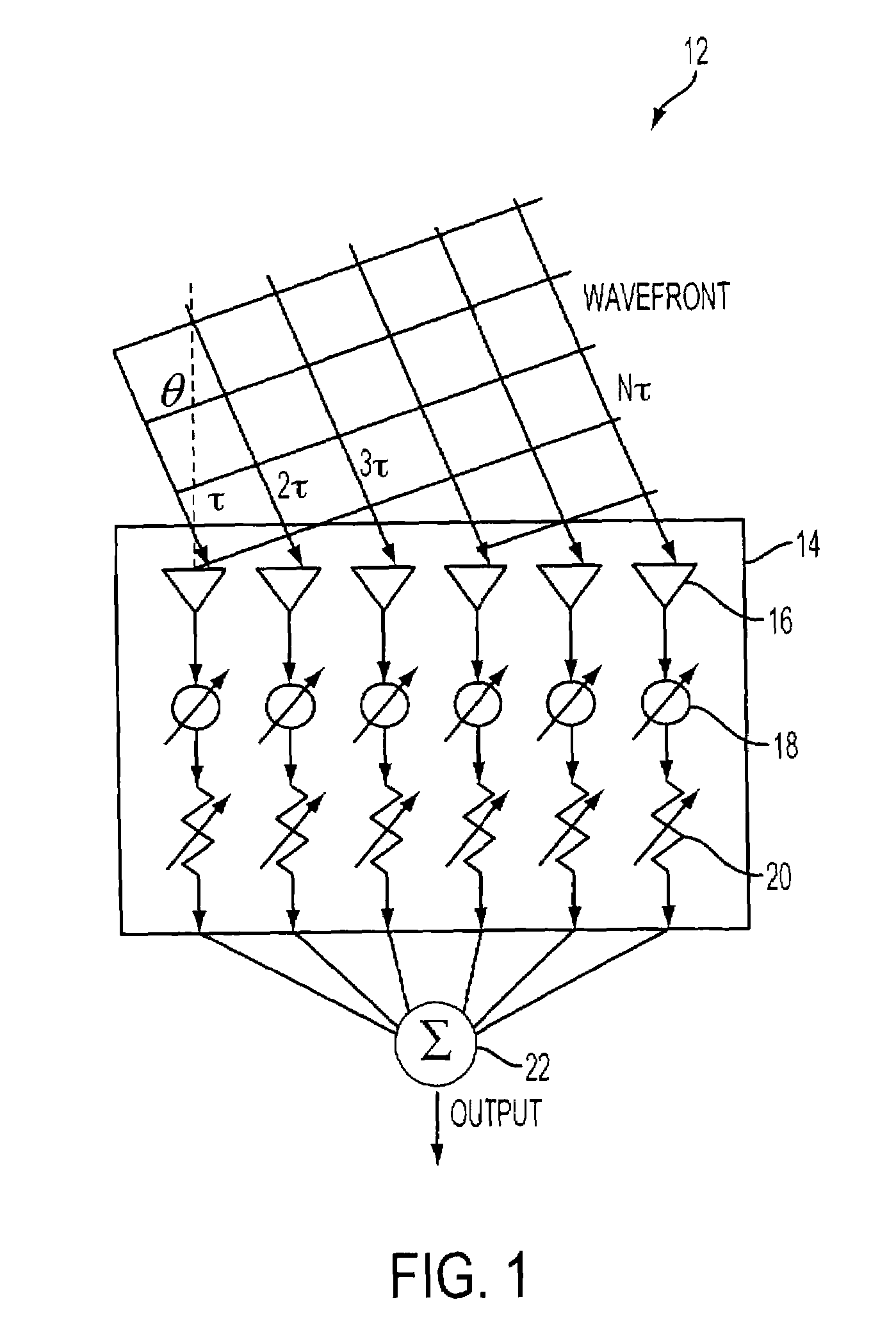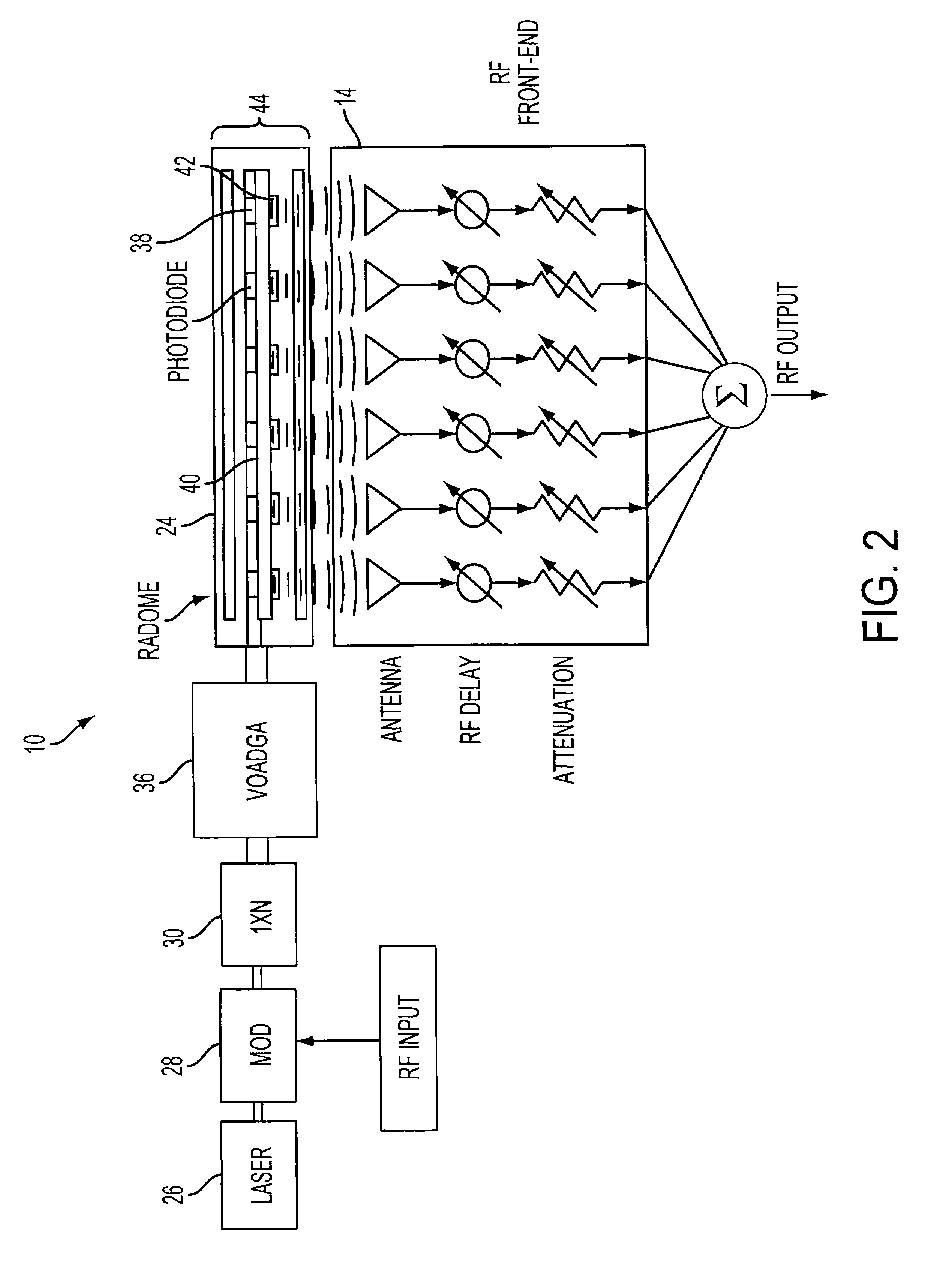Antenna calibration method and system
a phased array radar and antenna calibration technology, applied in wave based measurement systems, resonant antennas, instruments, etc., can solve the problems of corrupting techniques, unable to recalibrate antenna elements that are beyond the test manifold coupler, and inability to calibrate powerful calibration capabilities
- Summary
- Abstract
- Description
- Claims
- Application Information
AI Technical Summary
Benefits of technology
Problems solved by technology
Method used
Image
Examples
Embodiment Construction
[0032]FIG. 1 illustrates the desired characteristics of an in-situ optical calibrator 10 (see also FIG. 2) in a phased array antenna 12. The calibrator should distribute a: modulated RF signal over the aperture of an RF front-end 14, with an adjustable relative time delay, τ, between adjacent antenna elements 16, each connected to an adjustable phase shifter 18 and an adjustable attenuator 20 with outputs combined in a summer 22. For example, consider a system with a 24×24 element array antenna, an RF frequency range from 4 to 20 GHz and beam steering angles from −45° to 45° along the azimuth and elevation directions. The required delay resolution should be less than 1% of the period, which becomes 0.5 ps for the 20 GHz signal.
[0033]FIG. 2 illustrates optical calibrator 10 embedded inside a radome 24. Light from a laser 26 is modulated by an optical intensity modulator 28 at RF input signal and is split into N fiber channels by a 1×N splitter 30, where N is the number of antenna ele...
PUM
 Login to View More
Login to View More Abstract
Description
Claims
Application Information
 Login to View More
Login to View More - R&D
- Intellectual Property
- Life Sciences
- Materials
- Tech Scout
- Unparalleled Data Quality
- Higher Quality Content
- 60% Fewer Hallucinations
Browse by: Latest US Patents, China's latest patents, Technical Efficacy Thesaurus, Application Domain, Technology Topic, Popular Technical Reports.
© 2025 PatSnap. All rights reserved.Legal|Privacy policy|Modern Slavery Act Transparency Statement|Sitemap|About US| Contact US: help@patsnap.com



